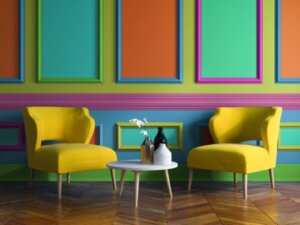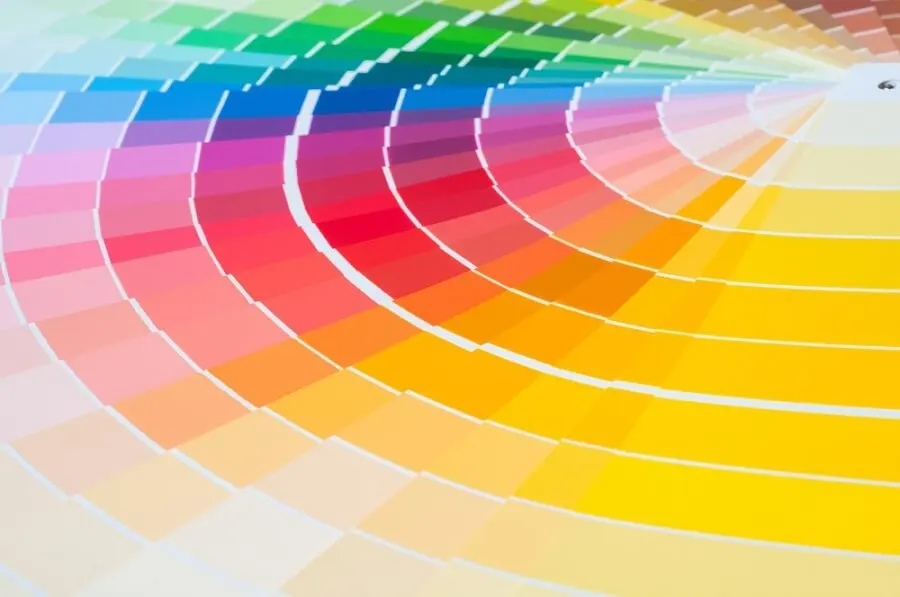Color Block: How to Apply This Trend in Interior Design

Color, color and more color for your rooms is the proposal of this interior design trend called color block. As its name suggests, it promotes the use of vibrant and well-defined colors in the spaces of a house or apartment.
The end result may be daring and eye-catching, but believe us that it’s worth giving it a try. Far from a monochromatic palette, the color block style encourages a contrast of tones that can be applied to walls and furniture. Let’s take a closer look at what it’s about.
The main characteristics of the color block style
Although it began to be used several years ago, color block is currently setting a strong trend in the world of decoration. As its name suggests, it appeals to the use of color in its maximum splendor.
It has its origins in the catwalks, back in the year 2000, when it became fashionable to combine garments of different colors. For example, combining a green jacket, a red shirt, and yellow pants were all the rage.
In this sense, decoration takes these ideas and welcomes color, but not just any color, as it tends to favor light, vivid, and bright tones. The objective is to give life to a space.
In this case, designers try to leave aside the pastels and softened chromatic scales, to turn fully to classic and rather pure colors. The idea of this decorative technique is to combine blocks of colors in a harmonious way – that is, they’re related to each other and complement each other.
The first of the advantages of this style is that, in general, it doesn’t follow rules or codes, but relies on imagination and personal style for decoration. But is it really true that neutral tones don’t work anymore? Don’t worry; they’re still very much in style!

How to apply the color block style successfully
You can apply it wherever you like and in the way that best suits you. In general, it’s customary to choose a primary color that will occupy an important space. Remember that these are plain colors that don’t present drawings or designs of any kind.
The first thing to do is to choose a room in your house to implement the technique. There are no best options. It can be the kitchen, a dining room, or even a bedroom. Once you know what place you will remodel, you have to focus on a few square meters of that place.
Then you can choose to color a wall, a piece of furniture, or the floor. Then, consider the options you have.
In case you don’t want to go for a color that’s too striking, you can choose a softer color from the selected palette. This is a good way to start, and you’ll notice the change.
We think you may also enjoy reading this article: Challenge Your Creativity with These 7 Original Ideas to Decorate Bottles
Stylish furniture
A good way to start using this design technique is through furniture and openings. In this case, you can paint a piece of furniture with colored stripes – that is, in blocks.
We say “stripes,” but it can be a complete part of the piece of furniture, such as drawers, shelves, or doors. If it’s a chest of drawers, it can be the drawers that set the color, while in a piece of furniture with doors, it could be the doors that have a colorful pattern.
As for the your doors and entryways, a classic of the color block style is to paint them in half a color, including the frame, whenever possible. Moreover, the color that goes on the door can be extended to one of the walls, and the effect of this color block is really eye-catching this way.
On the other hand, you can dress a sofa with a cover that’s a very intense color and contrast it with cushions of different shades. A rug, a blanket, or curtains that flood the room with color are also more than valid.
Color block walls
Now it’s time to focus on the walls and to consider how you can decorate them to take advantage of this decorative style. For starters, decorating experts recommend that the strong color is placed from the middle of the wall down and not the other way around. In this way, the upper part of the wall and the ceiling should continue with a light tone, and that way, you don’t oversaturate the wall.
Another way to paint a color block wall is with geometric shapes in your chosen tone and complementing colors. For example, you can make squares and paint them in purple, green, or red. Also, oblique or diagonal figures can be used to a great effect.
Finally, you can apply this style to highlight some architectural features of your house. You can paint arches, columns, stairs, moldings, or mezzanines.

Like this article? You may also like to read: Eco-Friendly Decoration: Sustainable Ways To Decorate Your Home
Colors supported by this style
Although there’s no rule about which colors do and which colors don’t, the favorites are greens, blues, fuchsias, mustard yellows, oranges, and purples. It should be noted that the most beautiful thing about this style is that you have complete freedom to choose the colors you like the most.
Color block is a style that constantly reinvents itself
We believe that this decorative style is so attractive because it adapts to all tastes and provides versatility. Large and small spaces, spaces with a lot or little natural light, on walls or furniture… in short, there are no excuses not to give it a try!
All cited sources were thoroughly reviewed by our team to ensure their quality, reliability, currency, and validity. The bibliography of this article was considered reliable and of academic or scientific accuracy.
- Heller, E. (2004). Psicología del color.
- García, J. F. C. (2017). Psicología del color aplicada a los cursos virtuales para mejorar el nivel de aprendizaje en los estudiantes. grafica, 5(9), 51-56.
- Carrascal, B. L. V., Angarita, H. L. P., & Hernández, C. C. (2020). La Psicología del color en el diseño. Revista CONVICCIONES, 7(14).
- Muñoz, A. V. (2013). Principios de color y holopintura. Editorial club universitario.
- Gibbs, J. (2009). Diseño de interiores.
- Ching, F. D., & Binggeli, C. (2015). Diseño de interiores: un manual. Gustavo Gili.
This text is provided for informational purposes only and does not replace consultation with a professional. If in doubt, consult your specialist.








